Russian ‘Tarantula’ Missile Corvette First Moving Ship at Sea Sunk by Ukraine's Kamikaze Drone Boats
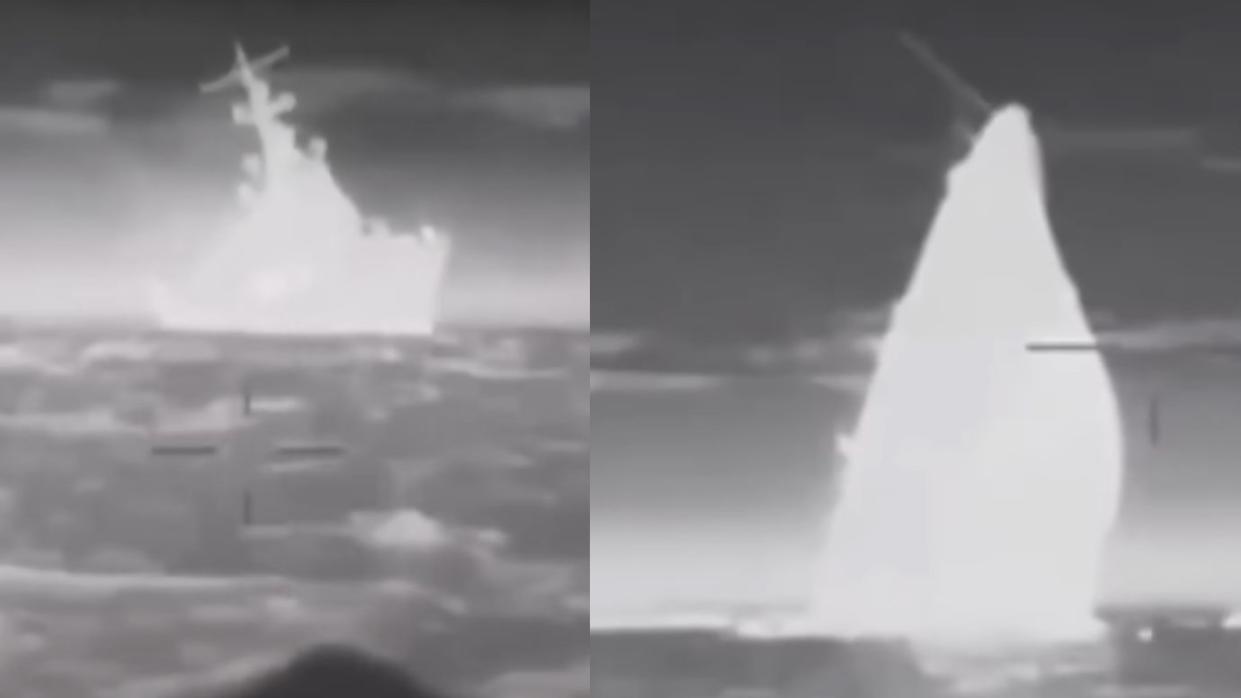
Since October of 2022, Ukraine’s remote-controlled kamikaze drone boats have taken a mounting toll on Russia’s Black Sea Fleet, blasting ships at harbor in Crimea and on Russian-soil in Novorossiysk. But they've also managed to intercept and attack moving Russian ships at sea. Until now, however, Ukraine’s sea drones hadn’t managed to sink a moving Russian warship outside of port.
That changed on January 31 for the unlucky R-334 Ivanovets, a Tarantul-III type missile corvette (by NATO nomenclature). Point-of-view footage shared by the Group 13 unit of Ukraine’s GUR intelligence service shows the Ivanovets getting slammed by multiple kamikaze drones near Lake Donuslav in Crimea, even as defensive 30-millimeter autocannon shells ineffectually splash seawater around the small incoming drones.
Ukraine’s military intelligence chief Kyrylo Budanov claimed, in an interview with The Warzone, that Ivanovets was struck by six Magura V5 drones. At least one more drone apparently recorded its sinking.
The 18-foot Magura is a newer-generation Ukrainian drone boat with a stated maximum range of 500 miles and a 440-lb warhead. It’s remotely controlled by an encrypted satellite datalink, which it uses to transmit back a thermal videofeed. It can accelerate up to 48 miles per hour when making its attack run, but cruises at half that speed.
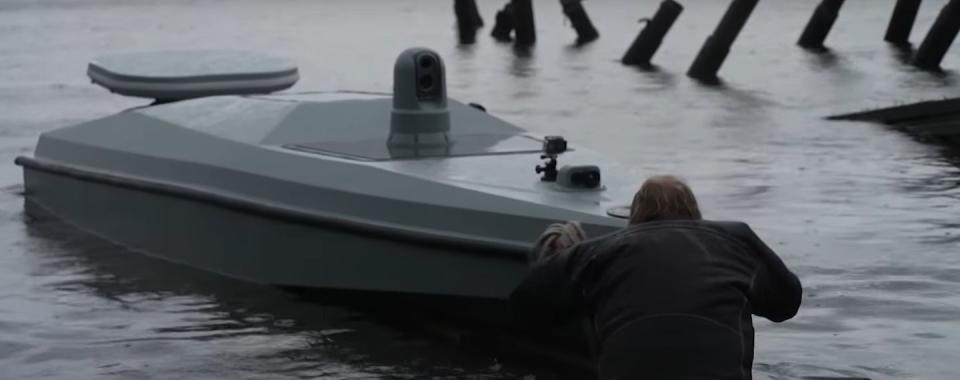
The black-and-white videos show the first drone approaching Ivanovets from astern at night. The rear-aspect approach was forced by the Ivanovets’s captain deliberately turning to speed away from the drone and bring his boat’s stern-mounted AK-630 cannons into the line of fire. While these guns can be guided by the boat’s MR-123 “Bass Tilt” fire control radar, the very low-riding profile of the Magura V5s likely foiled radar tracking, while the alternative optical TV sight lacked a thermal channel for nighttime engagement.
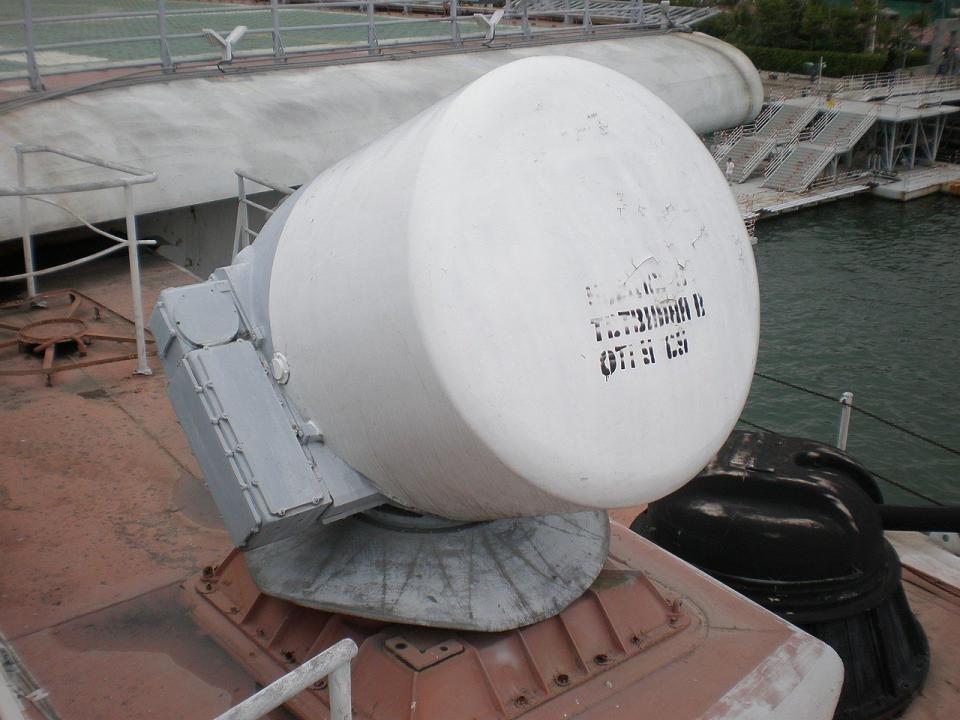
Subsequent footage from other attacking drones revealed a huge explosion and a gaping hole in the corvette’s port side at the waterline. A second drone then impacted the vessel’s transom beam in the stern.
Additional boats were piloted directly towards the hole opened on the port side. Eventually, a blast or onboard fire seemingly caused two of the vessel’s port-side P-270 missiles—weighing 2.25-tons each—to detonate.
Massive release of footage this morning from the Ukrainian USV strike sinking the Russian Tarantul-class corvette Ivanovets off the coast of Crimea yesterday.
Seen here, the Ivanovet's two port-side SS-N-22 Sunburn antiship cruise missiles suffer a catastrophic detonation. pic.twitter.com/REKyIm8gMu— OSINTtechnical (@Osinttechnical) February 2, 2024
The corvette began listing heavily starboard. Finally, its bow was visible protruding from the surface as it sank stern-first into the Black Sea.
A Tarantul has three life rafts on the stern and two on the bow for emergency evacuation. Budanov indicted that he didn’t believe Russian search-and-rescue efforts had managed to rescue any of the corvette’s crew (ordinarily 39 or 40 sailors and officers). However, Russian sources on Friday claimed that “all” 32 crew aboard had been rescued, with one member requiring hospitalization.
By this Russian account, Tarantul was struck by three boats over five minutes between 3:42 and 3:47 AM roughly in an ambush 5.6 miles west of the bay's entrance near Okunivka. The order to abandon ship was issued at 4 AM, and she sank 46 minutes later.
(Note: The Tarantul missile boat shouldn’t be confused with the 172-ton Project 205P anti-submarine patrol boat, designated the Tarantul by the Soviet Union and Stenka-class by NATO. A Project 205P boat was belatedly discovered to have been sunk at her quay by Ukrainian kamikaze drone boats late in December of 2023.)
Satellite images confirm the sinking of the Project 205P patrol ship "Tarantul" in Sevastopol Bay#OSINT #UkraineRussiaWar #UkraineWar #UkraineKrieg #Ukraine pic.twitter.com/bedtJjGhEL
— OSINT (Uri) 🇺🇸 🇨🇦 🇬🇧 🇺🇦 🇮🇱 (@UKikaski) January 19, 2024
What does Ivanovet’s loss mean for the war on Black Sea?
Displacing 515 tons, the Ivanovets was hardly the largest warship, nor did it have Kalibr land-attack missiles used to bombard Ukrainian cities, like Russia’s Buyan-M and Karakurt-class missile corvettes did.
However, it carried four powerful P-270 Moskit supersonic sea-skimming anti-ship missile armament (NATO codename SS-N-22 Sunburn). A 2017 Russian TV report on the Ivanovets claims “…four on-target hits from Moskit cruise missiles could sink a large aircraft carrier.”
A 2017 report of russian TV on 🇷🇺 vessel „Ivanovets“, destroyed yesterday by Ukraine. Russia claimed immediately it was real small & had no military value. But…
„Our ship was recognized the best in our unit. Its missiles can drown an aircraft carrier…“.#StandWithUkraine pic.twitter.com/kSQ0AuAlQ4— olexander scherba🇺🇦 (@olex_scherba) February 2, 2024
Of course, such weapons are of limited value against Ukraine, which had virtually all of its larger warships stolen by Russia in 2014 during the seizure of Crimea. The crew of Ivanovets actually used the ship’s missiles to sink the captured Ukrainian anti-submarine corvette Ternopil in July of 2023 in a training exercise—or, perhaps rather, an exercise in intimidation.
After the announced aggressive actions of the Black Sea Fleet of the Russian Federation in the Black Sea regarding possible attacks on civilian ships that will follow to Ukrainian ports, the missile boat "Ivanovets" (pr. 12411) conducted training firings at targets.
It was not… pic.twitter.com/MAOPthKpYz— Devana 🇺🇦 (@DevanaUkraine) July 21, 2023
Whether by accident or design, Russia’s symbolic destruction of the captured Ukrainian vessel was repaid in material fashion with the sinking of Ivanovets.
#ВМФ #ЧФ🇷🇺#Russian #Navy The RFS 953 'Naberezhnye Chelny' and the RFS 954 'Ivanovets', a Tarantul Class missile corvettes at the Black Sea. The two salvo launches of SS-N-22 Sunburn сruise missiles.
An animated GIF for my friends. 🙂 pic.twitter.com/zL3J4L0npl— Capt(N) (@Capt_Navy) January 10, 2020
Russia’s Black Sea Fleet now has just two active Tarantul-III type missile corvettes remaining in its 295th Sulinsk Missile Boat Division: R-239 Naberezhnye Chelny and R-60 Burya (which was uniquely upgraded with a Kashtan gun/missile air defense system). Additionally, the Russian Navy’s last remaining older Tarantul-II corvette—R-101 Stupinets—is currently deployed in Russia’s Caspian Sea Flotilla, and could hypothetically reinforce the Black Sea Fleet via the Volga-Don canal.
Reinforcements from other fleets aren’t currently possible, as Turkey won’t allow ships at war to pass from the Mediterranean to Black Sea through the Bosporus Strait. However, two others Tarantuls recently decommissioned in the Black and Caspian Seas and could potentially be returned to service: the Tarantul-III R-109 Breeze in 2021, and the uniquely configured Tarantul-II R-71 Shuya in 2023.
While the attack is not particularly far from Ukrainian controlled territory (130 miles), at least compared to earlier engagements, it’s notable that a half-dozen or more Ukrainian drone boats managed to infiltrate into Lake Donuzlav and close with Ivanovets while it was cruising at the heart of Crimea—and that no friendly naval or air assets can be seen assisting the beleaguered vessel despite its relative proximity to multiple Russian military bases. This suggests an incapacity of Russian sensors to detect the boats until they enter visual range, and a lack of communications or adequate quick reaction forces.
To be fair, earlier (at 4pm), at least six Ukrainian Storm Shadow cruise missiles struck Belbek airbase in Crimea. The base had so little warning of the stealth cruise missile’s approach that two Su-27 and Su-30 jets were damaged or destroyed on the ground before they could takeoff, and the commander of the 38th Fighter Regiment, Lt. Gen. Alexander Tatarenko, was killed at his command post. Perhaps chaos from this strike disrupted the ability to quickly dispatch aid to Ivanovets.
From Ukraine’s perspective, it’s undoubtedly instructive that it took as many as six hits to sink a 500-ton corvette, suggesting attacks on much larger and better defended Russian frigates could require an even larger number of kamikaze drones, or fielding more effective warheads. At least two Ukrainian companies are known to be developing ‘drone torpedoes’—the Marichka and Toloka—that could traverse long distances and in theory possibly sink large warships in one or a few hits. Operationalizing such systems, however, presents greater challenges than remote-control surface boats.
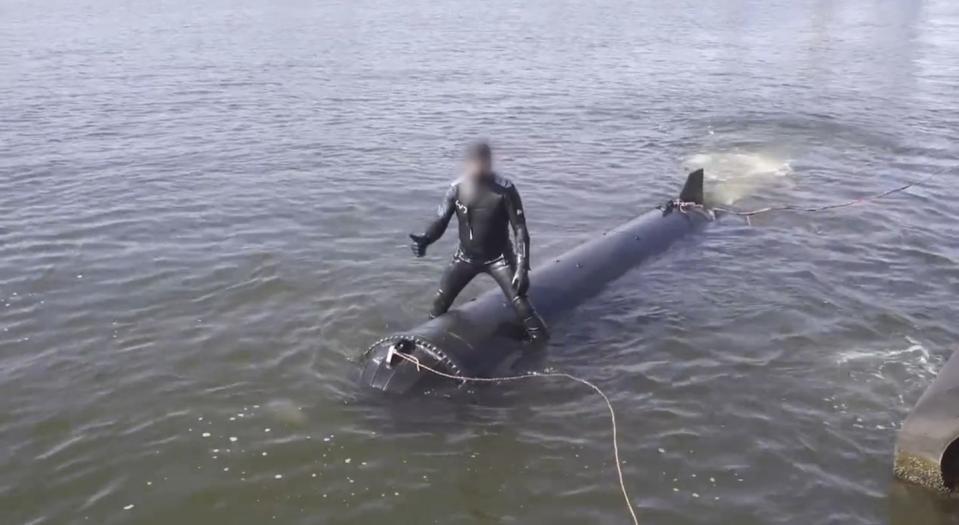
The Soviet Union’s Missile-Armed Maritime Tarantulas
🇷🇺#Russian #Navy #War Longitudinal section of the Tarantul-class missile corvette (project 12411). pic.twitter.com/eIBrVWwCss
— Capt(N) (@Capt_Navy) February 1, 2024
During the Cold War, Soviet shipyards cranked out numerous small, short-range, and agile missile boats armed with powerful new anti-ship missiles able to threaten even large warships at a distance. This design concept was validated in February of 1967, when two Egyptian missile boats at harbor in Port Said struck the gun-armed Israeli destroyer INS Eilat with three P-15 Termit missiles from 19.5 miles away, sinking the ship.
However, by the 1970s, Soviet naval architects realized that their cheap missile boats—like the Project 205 Osa —risked being too easy to bump off and insufficiently seaworthy.
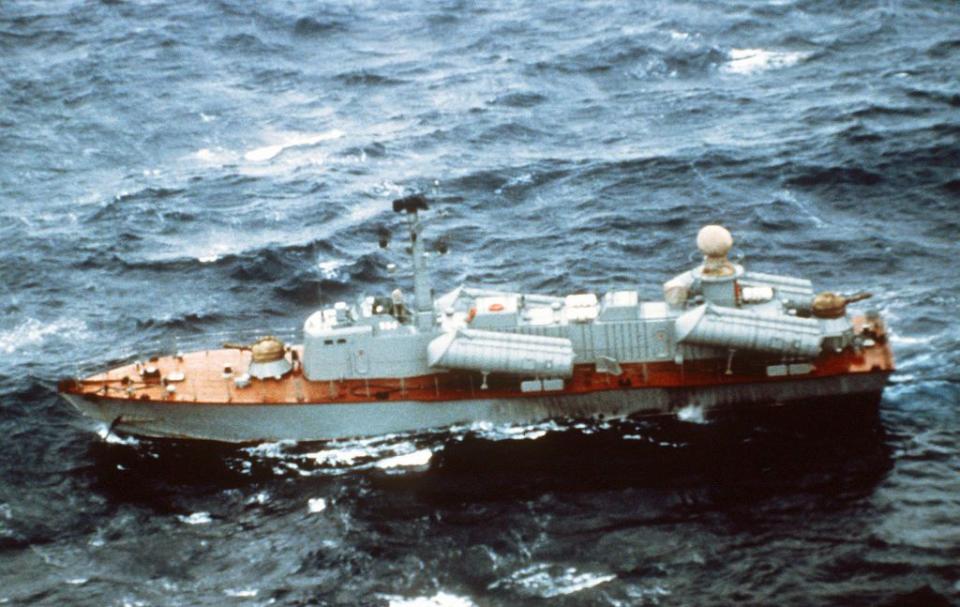
The resulting Project 1241T corvette design had the same maximum speed and primary armament as an Osa (four P-15s installed in KT-152 launchers on either the side of the ship), but three times the mass. However, the bigger corvette had 40% greater range, better living conditions for the crew of 41 sailors and officers, and boasted a large Monolit-B radar dome (actually containing four search radars and two target tracking radars) and a stated maximum range of 280 miles.
The bigger boats also had beefier close-defense armament that was effective against aircraft and surface targets, including a rapid-firing AK-176 76-millimeter gun in an aluminum turret on the bow, and two 30-millimeter AKS-630 six-barrel Gatling cannons on the stern. Short range air defense was supplemented by Strela or Igla heat-seeking missiles, mounted on a four-rail pedestal launcher on the stern.
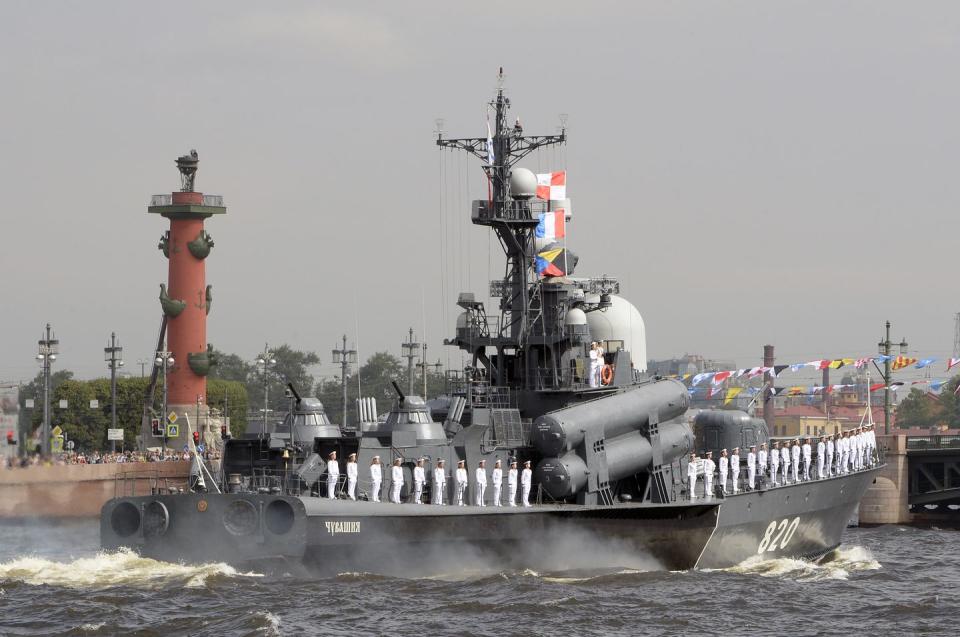
Four gas-turbine engines turned the 1241T’s two propellers. Two engines were used for fuel-efficient cruising at 12 knots (achieving the maximum range of 2,800 miles), and the other two could activated to attain the maximum speed of 44 miles per hour.
The operational concept was for these boats to accompany and protect the smaller Osa-class boats from being bullied at close range by warships—ones that managed to evade the initial missile attack—with their own 76-millimeter guns.
The original Soviet Project 1241T corvette and its 1241RE export-model (with downgraded radars and P-20 missiles) were codenamed Tarantul-II and Tarantul-I respectively by NATO.
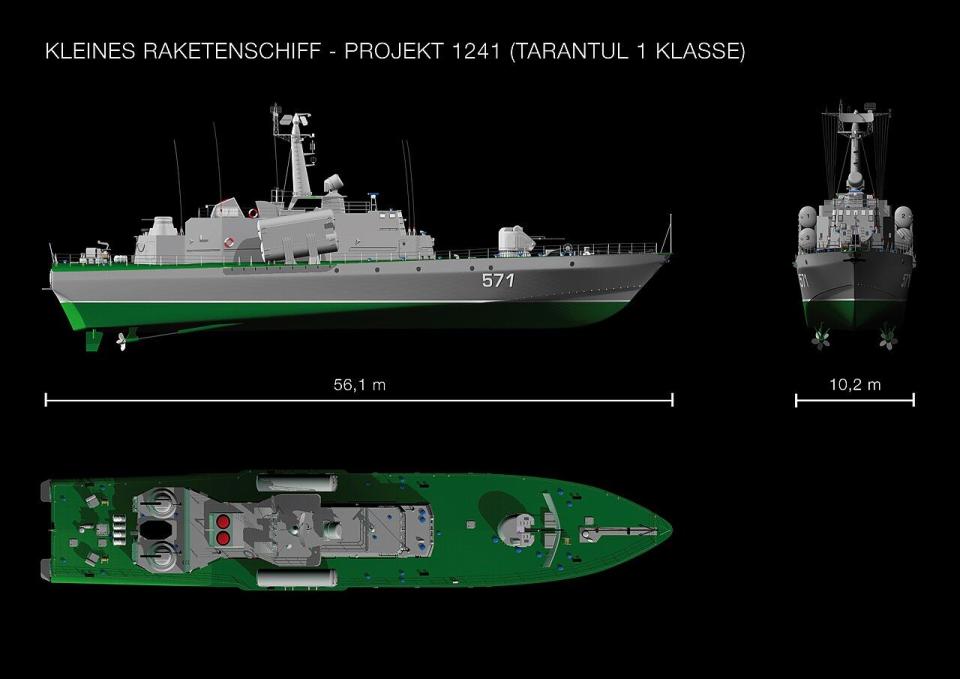
The Soviet Navy ultimately acquired 13 Tarantul-IIs and exported 22 Tarantul-Is, while keeping a 23rd Tarntul-I for training foreign sailors in the Soviet Union.
Today, only the Tarantul-II R-101 Stupinets (launched in 1984) remains in Russian service in the Caspian Sea Flotilla. Furthermore, Ukraine’s last Tarantul-II boat, Prydniprovye was seized by Russia in 2014. Its present status remains unclear.
The second-generation Project 1241.1M Tarantul-III featured revised propulsion from two diesel cruising engines and two uprated gas-turbines that significantly boosted service life, fuel efficiency, and maximum speed (to 48 miles per hour).
Offensive armament was initially upgraded on the first 11 boats with the P-80 Zubr missile, before further upgrading to the supersonic P-270 Moskit-M (“Mosquito,” also codenamed SS-N-22 Sunburn). The Moskit-M’s 3M82 radar-guided and ramjet-powered missile attained a maximum speed of Mach 2.8, and could either skim as low as 7 meters above the surface on its terminal approach, or attain a maximum range of 105 to 155 miles by flying at a higher trajectory.
The Tarantul-III also featured modernized radars and self-defense systems, including two Wine Glass self-defense jammers and two PK-16 decoy dispensers to misdirect incoming missiles. On later production ships, these were supplemented by four newer PK-10 decoy dispensers, and a Spetr-F laser warning system was added.
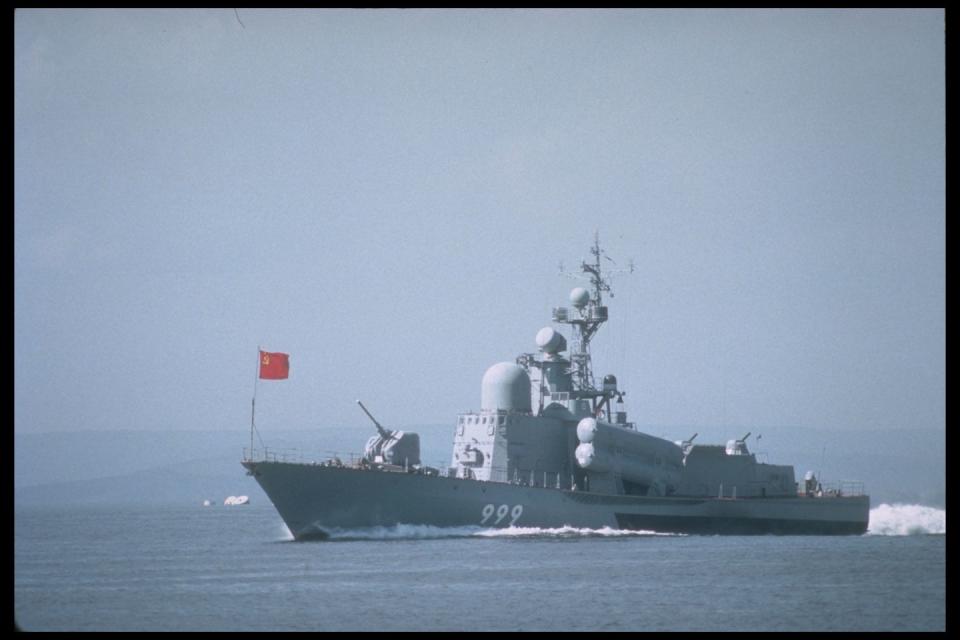
A total of 34 Tarantul IIIs were launched between 1985 and 1994, of which 16 remain in service now that the Ivanovets is sunk.
Succeeding the Tarantul-III are slightly larger Project 1241.8 Molniya corvettes, exported to and license built by Vietnam, armed with 16 subsonic Kh-35 anti-ship missiles (range 80 miles) instead of P-270s. Two 1241.8 corvettes at the Vympel shipyard are slated to enter Russian service in the Black and Caspian Seas, but they lack the means to get their as a result of the Turkish block on the Black Sea.
he Soviet Union also built twenty-nine Project 1241.2 anti-submarine corvettes (codename Pauk-class) based on the Tarantul’s hull, equipped with sonar, torpedoes, and anti-submarine rockets instead of missiles. Russia’s Navy still operates one, while Ukraine inherited five Pauks—of which two were decommission and two were seized by Russia in 2014. The last, BG-50 Grigoriy Kuropytanikov, remained active in Ukraine’s Coast Guard, but was allegedly hit by a Russian airstrike in 2022. Its current status is unclear.
Finally, it’s worth noting that NATO operates four Tarantul corvettes on the Black Sea: the Bulgarian Navy’s Tarantul-III Molniya (Lightning), and three Tarantul-Is operated by the Romanian Navy which will have their Soviet missiles replaced with two four-shot Norwegian Naval Strike Missile launchers, plus new surveillance radar and combat management systems.
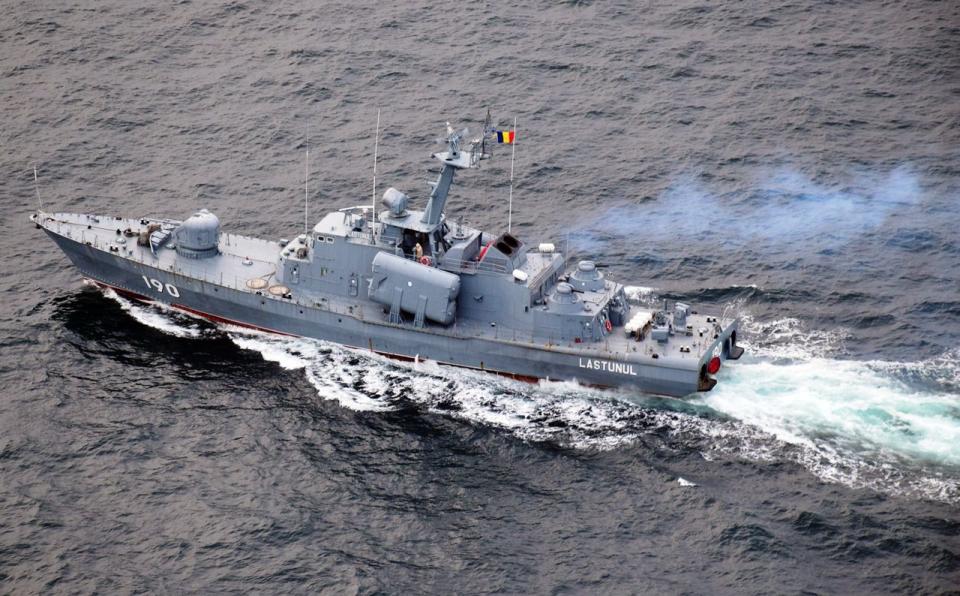
You Might Also Like

